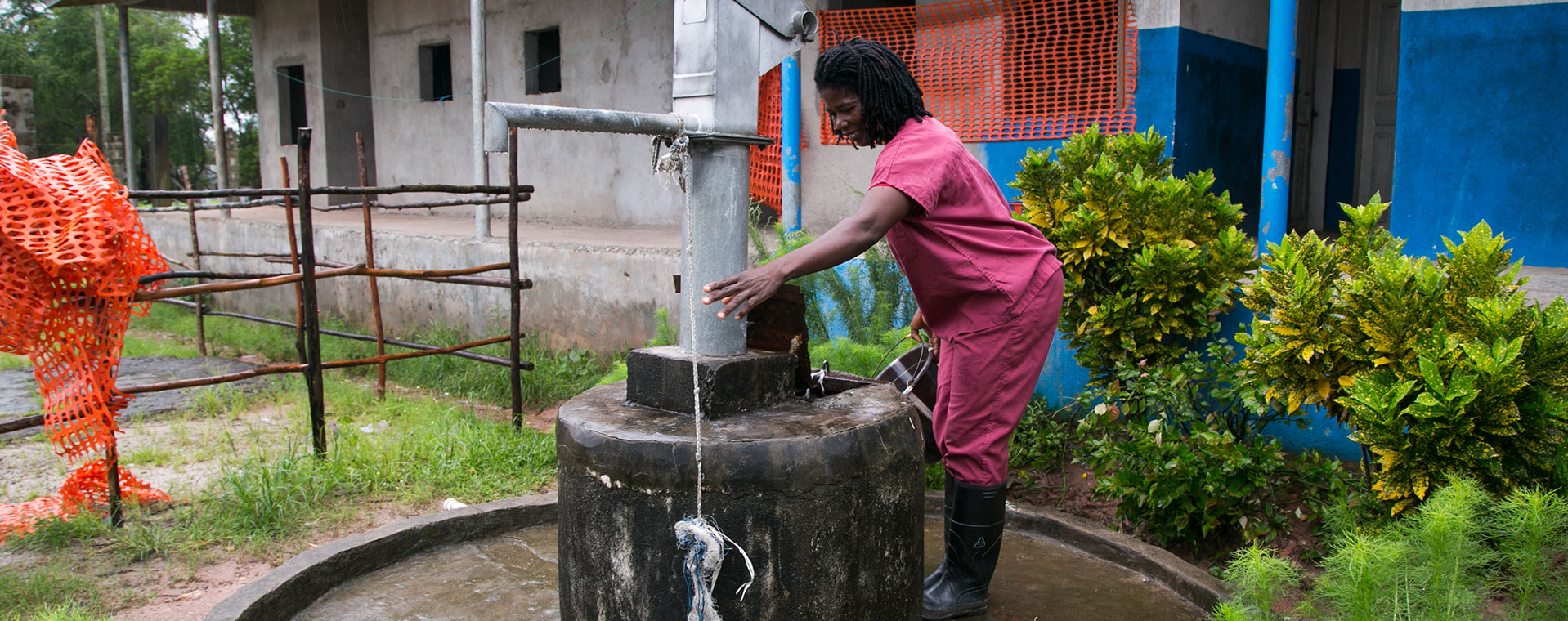
Improving Water, Sanitation, and Hygiene (WASH) in the Out Patient Department (OPD) in a Local Health Facility in Cameroon
STORIES |
Cameroon Baptist Convention Health Services
For more information, contact Nkwan Jacob Gobte, RN, BNS, MPH, Infection Prevention & Control/WASH Nurse, Cameroon Baptist Convention Health Services (nkwanjacobgobte@gmail.com)
Background
Many health facilities around the world provide poor quality care due to lack of the essential WASH services. Water, Sanitation and Hygiene (WASH) is the foundation of quality care. In fact, there cannot be any quality care without WASH. Poor health outcomes like health care associated infections, antibiotic resistance, and maternal mortality are closely associated with poor WASH services (WHO/UNICEF, 2019 (b)). Consequently, we need strong WASH systems to guarantee quality of care as well as to fight all kinds of infections.
According to the World Health Organization, and UNICEF, One in four health care facilities lacks basic water services and one in five has no sanitation services (WHO, 2019). It has been reported that about 2.0 billion and 1.5 million people, respectively use health facilities without toilets and water, and 42% of facilities globally have no hand hygiene at points of care (WHO/UNICEF, 2019). Although the toilet is the most important sanitation facility in the health care setting it is often neglected, especially the patient toilet. The quality of the patient toilet reflects the respect accorded to the patient. Most patient toilets are often dirty, in accessible to most patients, poorly ventilated, and hardly light at night, leading to open defecation within the health facility especially at night.
The problem
Although BBH has enough toilets in terms of numbers, most of them do not meet WASH standards prescribed by the World Health Organization (WHO, 2018). The toilets are not well designated and labeled according to gender, lack provision for menstrual hygiene, and 80% the toilets were sitting type water system toilets rather than squatting, which are not culturally friendly to most patients who use the facility. The lone pit toilet at the OPD which was constructed many years ago was not being used due to lack of privacy. Furthermore, it was very common to find stool on the floor of the water system toilets because patient who had to provide stool samples for analysis had to first deposit it on the floor to collect the specimen before picking the rest of the stool with their hands into the toilet, a task many people would forget or considered risky as they may contaminate their hands. The Head of the BBH Laboratory said, “it was common for patients to contaminate samples and themselves during the process of collection”
The goal of the project
The goal of the project was to change the water system toilet in the OPD to the squatting type and the provide privacy at the pit toilet to make them culturally acceptable and user-friendly, as well as ease of stool specimen collection.
Methods and materials
With approval from the hospital management, the sitting type water system toilet was changed to the squatting type, and a fence constructed in front of the pit toilet to provide privacy. The pit toilet was also separated into the females from the males sections, and labeled accordingly.
Results
Patient started using the pit toilet, and the hygiene of the water system toilet improved as patients no longer had to deposit stool on the floor. The laboratory staff also appreciated the changes because it simplified the instruction they had to give to the patients on how to collect stool specimen. Patients are now happy and comfortable to use the toilets.
The BBH Laboratory Head, Madam Tatah Grace says patients and the laboratory staff are happy with the improvement because the toilet is convenient, patients no longer defecate on the floor of the toilet, and consequently it no longer smells as it used to. In her word,
“the present toilet has reduced the rate of contamination of stool samples because patients no longer have to pass stool on the floor before collecting stool samples”.
Conclusion
Quality care begins with WASH and specifically the toilet. The toilet is the most important facility in the hospital. Attention should be given not only to the number of toilets in the hospital, but also to the type and quality of the toilets. Toilets should be culturally friendly and comfortable to the user. WASH personnel should always be involved in the conception, design and the construction of toilet facilities in the hospital.
References
WHO/UNICEF, (2019 a). Water, Sanitation and Hygiene in Health Care Facilities: Global baseline report 2019. Available at https://data.unicef.org/resources/wash-in-health-care-facilities/.
WHO/UNICEF, (2019 b). Water, sanitation, and hygiene in health care facilities practical steps to achieve universal access to quality care. Available at https://www.unicef.org/media/51591/file/WASH-in-health-care-facilities-practical-steps-2019%20.pdf.
WHO (2018). Guidelines on sanitation and health. Available at https://www.who.int/water_sanitation_health/sanitation-waste/sanitation/sanitation-guidelines/en.
